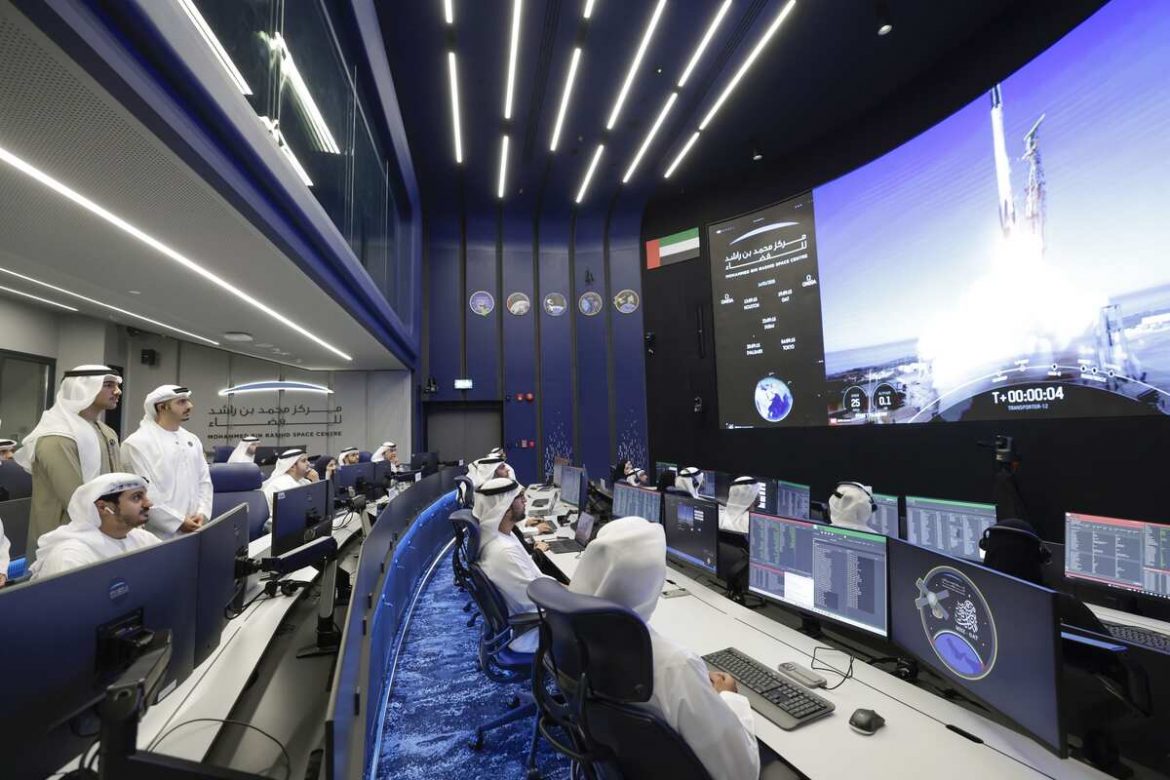MBZ-SAT was launched aboard SpaceX’s Falcon 9 rocket on Tuesday at 11.09 PM UAE time
H.H. Sheikh Mohammed bin Rashid bin Mohammed bin Rashid Al Maktoum witnessed the successful launch of MBZ-SAT, the most advanced satellite in the region, at the Mission Control Center at the Mohammed Bin Rashid Space Center (MBRSC),
Named in honor of President His Highness Sheikh Mohamed bin Zayed Al Nahyan, MBZ-SAT was launched from the Space Launch Complex 4E (SLC-4E) at the Vandenberg Space Force Base in California, USA, aboard SpaceX’s Falcon 9 rocket on Tuesday at 11.09 PM UAE time.
“We are proud to announce yet another successful mission that is the launch of MBZ-SAT, which has given a positive start to a busy and promising year at MBRSC. This achievement is more than a testament to our capabilities—it is a signal of what lies ahead for the UAE in the realm of space exploration. Each mission builds on the last, paving the way for groundbreaking advancements and cementing the UAE’s role as a leader in shaping the future of space science and technology,” stated Talal Humaid Belhoul Al Falasi, vice president of MBRSC.
Milestone in Earth observation technology
MBZ-SAT marks a significant milestone in the UAE’s satellite development journey, having been fully developed entirely by Emirati engineers at MBRSC. The satellite was announced in 2020 by His Highness Sheikh Mohammed bin Rashid Al Maktoum, Vice President, Prime Minister, and Ruler of Dubai, and was officially approved for launch last year.
Weighing 750 kg with dimensions of 3m x 5m, MBZ-SAT represents a significant advancement in Earth observation technology. The satellite’s technical specifications demonstrate substantial improvements across all systems. Its imaging system also consists of one of the highest resolution cameras with improved data transmission rates – four times faster than existing systems.
“The launch of MBZ-SAT represents a pivotal moment in the UAE’s space sector development, showcasing our nation’s exceptional capabilities and technological prowess. Engineered to meet the most rigorous international standards, with substantial participation from local entities in the UAE, this satellite exemplifies our strategic commitment to pioneering global innovation,” noted Salem Humaid AlMarri, director general of MBRSC.
Liftoff! The Falcon 9 rocket, carrying MBZ-SAT, has launched.#MBZSAT pic.twitter.com/KzN8pUXMts
— MBR Space Centre (@MBRSpaceCentre) January 14, 2025
Read: Exploring the use of AI translation tools in the workplace in the UAE and KSA
Satellite to revolutionize crucial domains
MBZ-SAT is also equipped with an advanced electric jet propulsion system, a navigation system accurate to one meter, and a star tracking system that allows for unparalleled precision in positioning capabilities. These capabilities position MBZ-SAT as a significant advancement in Earth observation technology, providing valuable data for both research and practical applications.
The satellite will be able to capture images with double the precision of previous models while increasing image generation capacity tenfold. This improvement comes from its integrated scheduling and processing system, which can deliver processed images within two hours of capture.
“MBZ-SAT is a result of the exceptional collaborative achievement of our Emirati team, who have demonstrated remarkable dedication and expertise throughout this strategic national initiative, working seamlessly with local industry partners. At MBRSC, we are confident that this advanced satellite will revolutionize crucial domains including environmental surveillance, infrastructure optimization and emergency response capabilities,” added Amer AlSayegh AlGhaferi, project manager of MBZ-SAT.
MBZ-SAT will serve multiple functions, including supporting environmental monitoring, infrastructure management and disaster relief. These features allow local and international entities to make informed decisions based on current, accurate data. The satellite will be operated and managed by the Mission Control Centre at MBRSC, with specialized teams handling operations and analyzing the data transmitted to Earth.
